The fault plagued Autonomic Logistics Information System (ALIS) for the F-35 will be replaced by the new Operational Data Integrated Network (ODIN).
Ellen Lord, the Pentagon’s chief weapon’s buyer, said ALIS would be replaced with Lockheed Martin’s ODIN, which will be streamlined for efficiency “with the voice of the maintainer and the pilots at the forefront of the requirements list”.
Lord told Reuters here that Lockheed Martin, the F-35’s prime contractor, would work on ODIN under the current ALIS funding profile without additional cost to the taxpayer. Lockheed are essentially reinventing the system to be more functional and reliable.
The US Government Accountability Office blamed ALIS for delaying aircraft maintenance, one of the very things it was meant to facilitate.
“One Air Force unit estimated that it spent the equivalent of more than 45,000 hours per year performing additional tasks and manual workarounds because ALIS was not functioning as needed”, said the GAO report in November.
Lockheed Martin describe the purpose of ALIS as follows:
“ALIS integrates a broad range of capabilities including operations, maintenance, prognostics, supply chain, customer support services, training and technical data. A single, secure information environment provides users with up-to-date information on any of these areas using web-enabled applications on a distributed network.
The F-35 is the first tactical aviation system to have sustainment tools engineered in concert with the aircraft for efficiency and cost effectiveness. Compared to previous aircraft, a higher fidelity of information about the F-35 fleet is tracked within ALIS to reduce operations and maintenance costs and increase aircraft availability.”
It is understood that ODIN will be based in the cloud and designed to deliver data in near real time on aircraft and system performance under heightened cyber security provisions.
The new system should be ready by 2022.




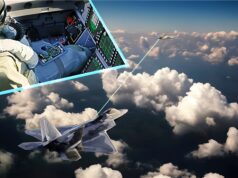
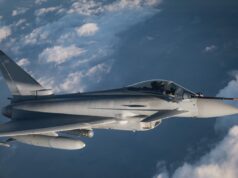
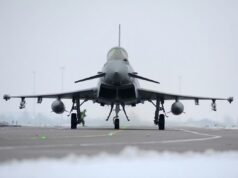
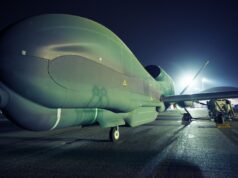

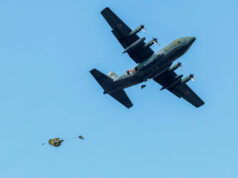


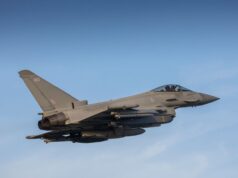

“The new system should be ready by 2022”
Forget purchasing F35A’s and concentrate funding on Typhoon-Tempest. We are more than capable of getting a test and evaluation Tempest aircraft flying before 2025 “when the arrival of Block 4 software supposedly becomes available if we put our minds to it.
Fitting of Meteor and other munitions will not be possible until then either.
Pratt & Whitney are developing a new engine to boost performance and range which will not be in service until at least 2026/7 when we are already well ahead of the ballgame now from what I’ve been reading recently here on UKDJ.
“Pratt has already begun testing some technologies from the Growth Option 2.0 suite in various rigs and demonstrators. Bromberg called the upgrades “relatively low risk”
I wouldn’t hold my breath on that one given the history of the F35 thus far, 10 years too late and counting.
https://www.defensenews.com/industry/2018/06/13/pratt-whitney-is-pitching-a-new-version-of-the-f-35-engine/
“We are more than capable of getting a test and evaluation Tempest aircraft flying before 2025”
No. Not a chance.
Please explain David, The German Franco 6th gen will be flying in this form by 2026, so why not us?
See attached link.
“Paris and Berlin target the first flight of a prototype around 2026”
Are you suggesting we are a long way behind them? In which case we can expect to lose out on potential sales I guess.
https://www.reuters.com/article/us-france-airshow-europe-fighter/spain-joins-france-and-germany-in-race-to-build-europes-next-combat-jet-idUSKCN1TI0Z3
Several reasons:
The Franco-German project started earlier and is therefore more advanced.
The Franco-Germamn “target” date is 2026, a year later than 2025.
Delays are endemic in defence projects, and even though the French have a significantly better record than the UK, I fully expect that 2026 date to slip.
The UK’s record on delays in defence projects – for whatever reason – is dreadful. Just look at the carriers, the frigate projects, Astute submarines, and above all Nimrod. And all these projects were UK only. Multinational projects (Tempest involves Sweden and Italy) suffer even worse delays, thanks to political infighting….
A 6th gen fighter is a huge leap forward from the 4th gen+ Typhoon. The complexities and magnitude of the project are really huge.
So, in short, the Franco German project is hardly likely to meet its 2026 target. And Tempest could never, realistically, fly by 2025.
I tend to agree with most of your comments in relation to delays in our defence projects, but as I understand it, a long-overdue shakeup within the MOD will take place at some point later this year.
Purely from the novice’s perspective, The Tempest as seen today will not be the final version and was most likely produced for testing some five years or more prior to this.
Rolls Royce who is currently designing the power plant for Tempest must surely require a near-finished version due to the positioning of the engines inside the airframe which I have been informed is somewhat critical.
UKDJ
Rolls-Royce develop ‘world-first tech’ for Tempest fighter jet
By George Allison – January 13, 2020
“Before the launch of the Tempest programme, Rolls-Royce had already started to address the demands of the future. Back in 2014, the company took on the challenge of designing an electrical starter-generator that was fully embedded in the core of a gas turbine engine, now known as the Embedded Electrical Starter Generator or E2SG demonstrator programme.”
So, by putting two and two together I would have assumed that somewhere in the UK (Warton possibly?) the current version exists and quite possibly a simulator of sorts to measure the performance of both engine and airframe.
In order to achieve the two points, I mentioned above, the electrical wiring plus other flight controls must also exist, virtual or otherwise.
So as I’ve previously mentioned in prior posts, could we not utilise some of the current equipment found on Typhoon to speed up the introduction of a demonstrator?
Personally, and from a novices point of view, as I have said, we might be just a little bit more advanced than the Companies involved are letting on!
https://en.wikipedia.org/wiki/BAE_Systems_Replica
“According to reports, the Replica project is known to have been worked on from 1994 to 1999. It is widely believed that Replica may have been once intended to replace the RAF’s Panavia Tornado fleet from 2017 onwards. Experience and data acquired through the program was later rolled into the Joint Strike Fighter (JSF) program, while technologies from Replica have reportedly played a role in the development of other aircraft, including unmanned aerial vehicle (UAV)s.”
Causley rolled out in full view some ten years later.
https://theaviationist.com/2014/02/25/mysterious-bae-replica/
I tend to agree with most of your comments in relation to delays in our defence projects, but as I understand it, a long-overdue shakeup within the MOD will take place at some point later this year.
Purely from the novice’s perspective, The Tempest as seen today will not be the final version and was most likely produced for testing some five years or more prior to this.
Rolls Royce who is currently designing the power plant for Tempest must surely require a near-finished version due to the positioning of the engines inside the airframe which I have been informed is somewhat critical.
UKDJ
Rolls-Royce develop ‘world-first tech’ for Tempest fighter jet
By George Allison – January 13, 2020
“Before the launch of the Tempest programme, Rolls-Royce had already started to address the demands of the future. Back in 2014, the company took on the challenge of designing an electrical starter-generator that was fully embedded in the core of a gas turbine engine, now known as the Embedded Electrical Starter Generator or E2SG demonstrator programme.”
So, by putting two and two together I would have assumed that somewhere in the UK (Warton possibly?) the current version exists and quite possibly a simulator of sorts to measure the performance of both engine and airframe.
In order to achieve the two points, I mentioned above, the electrical wiring plus other flight controls must also exist, virtual or otherwise.
So as I’ve previously mentioned in prior posts, could we not utilise some of the current equipment found on Typhoon to speed up the introduction of a demonstrator?
Personally, and from a novices point of view, as I have said, we might be just a little bit more advanced than the Companies involved are letting on!
“According to reports, the Replica project is known to have been worked on from 1994 to 1999. It is widely believed that Replica may have been once intended to replace the RAF’s Panavia Tornado fleet from 2017 onwards. Experience and data acquired through the program was later rolled into the Joint Strike Fighter (JSF) program, while technologies from Replica have reportedly played a role in the development of other aircraft, including unmanned aerial vehicle (UAV)s.”
Causley rolled out in full view some ten years later.
https://theaviationist.com/2014/02/25/mysterious-bae-replica/
I also stumbled upon this link which clearly suggests 2025 as the timeframe for a Tempest prototype. Makes for an interesting read!
https://www.theengineer.co.uk/tempest-combat-aircraft/
Lmao .. you have no memory of the Eurofighter development?
Just how many are in service? How does that compare with any other country in the world doing the same? We are doing all right on the whole. It’s clear this plane is a quantum leap forwards and revisions and versions of it are likely to be continuing to be built into the 2nd half of this century. Its likely that the last ones to be built will be much more powerful than the first and in turn those planes (F53???) will be upgraded before their replacements arrive. All manner of test bed systems will be tried out on some sort of fake aircraft before a half viable real Tempest will be shown.
Are we not contractually obliged to buy the remaining F35’s?
No, we are not, we have 48 on contract. Most commentators expect the order to top out at around 90 max. Any more than that seriously undermines the future case for Tempest.
This has absolutely nothing to do with the article. Just a childish rant.
Meteors aren’t even in the typhoon fleet according to the flight instructor i asked, and when i asked him which if the jets he’s flown are the most fun & what he’d like to fly into combat today .. he said the Rafale, which is like a rocketship and the F-35.
From a typhoon instructor.
Sorry Nigel. But a Tempest flying for 2025 is totally unrealistic. The RAF hasn’t even released a requirement for what the RAF wants. I get the feeling you are not a fan of the F35. Tempest is to replace the Typhoon post 2040, and will be a series of systems, a mix of manned and unmanned systems, with some tech proven on Typhoon to speed things up. No way will France/Germany have a 6th gen fighter flying in 6 years time, no way.
Have to disagree I’m afraid Robert unless you know more?
“The plan is to finalise the design in the early 2020s, produce a flyable prototype by 2025 and have the aircraft entering service by about 2035. By that time, Typhoons are likely to have many flying hours still in reserve – the aircraft is still in production – and those in service will be phased out gradually over five to 10 years, in line with the RAF’s existing practices.”
https://www.theengineer.co.uk/tempest-combat-aircraft/
And they are only talking about having a technology demonstrators by 2026, that could mean anything, doesn’t even mean they will have a flying aircraft. Our own EAP first flew in 1986, Typhoon entered service in 2003, initial operating capability in 2007. 21 years after EAP first flew. I’m not saying Tempest will take quite as long as that, but it won’t be far off.
“Sorry Nigel. But a Tempest flying for 2025 is totally unrealistic.” Reply in answer to your comment Robert.
I’m more inclined to believe the Engineer and Greg Bagwell on this one I’m afraid, and with the progress we appear to be making with the engine, never say never!
“The Engineer consulted Greg Bagwell, president of the Air Power Association, an organisation that brings together individuals, companies and bodies with an experience and interest in aerial combat. Bagwell, a former Air Marshal in the RAF, is well placed to provide such a view. As well as being air commander for RAF operations over Libya in 2009, earlier in his career he served as a Tornado pilot; he has also flown F-16 Fighting Falcons and Typhoons. His comments as reported here are his personal views, based on that considerable experience.”
Yes, but Greg Bagwell doesn’t build or fund 6th gen fighter programmes. I hope I’m wrong, I really do. But to go from a plastic mock up, to a flying prototype in 5 years, for a programe as complex as a 6th gen system will be, just no. And when you look at the funding problems the MOD is facing. And when you look at all past fighter projects, and the length they all take, Typhoon F22, F35, Rafael, Grippen. They are all 20+ year projects. The French can’t even afford to put a HMS on Rafael, or more powerful M88 engines, let alone get a 6th gen prototype flying in 6 years time.
Also the X-35 first flew 20 years ago and F-35 production has only really ramped up in the past few years, this is even with all the money the U.S has thrown at the project, so I imagine it could take us even longer depending on how many “bugs” and “issues” pop up during development.
Who is paying? I doubt LM is. Yet another costly upgrade for the taxpayer because concurrency is a disaster.
It’s in there Lockheed will complete it under current funding for ALIS
The answer is in the article lordtemplar
If you believe that i have a bridge to sell you. Maybe no additional costs for future aircraft, but i seriously doubt that LM will pay to recall aircraft and do the upgrades, as well as all the re-training of ground crews and maintenance facilities. I may be wrong, time will tell.
Good Morning All
ALIS is one of those programmes that was doomed from the start. When you give a vendor (LM) $19bn to come up with an end to end logistics system with no incentive for delivery you are going to be doomed to failure, especially when you do not fully understand the needs of all your customers, US and multinational.
The fact that no new extra funding is being added to the budget shows that mistakes have been made and “accepted” by the supplier. Pivitol, amongst other companies have been working with the USAF at “Kessel Run” to try and better understand the real user requirement and to make the system fit for purpose – as everyone knows when you change the name of something you are accepting that they old system/organisation is no longer fit for purpose and “a line needs to be drawn” and we need to “look to the future” where “lessons will be learned.
I can only draw your attention to the UK where JFC has been renamed Strategic Command and ISS has been renamed Defence Digital.
Nigel – Whilst I know your negativitiy towards the F-35 platform I agree that the RAF going down the F-35A route would do untold damage to the ability of the UK (in the context of Global Britain) to act as a sovereign state. The F-35B was purchased to fulfill a specific funtion – operate from aircraft carriers, which they are now doing. The RAF have a different requirement currently satisfied by the Typhoon and, if they and industry are to be believed, by TEMPEST moving forward. Focusing on the F-35A is just a distraction, the RAF should be getting on with turning Typhoon into what it is capable of becoming and investing in 6th generation technologies to replace not just Typhoon but the family of UAV’s that the RAF/Army are currently flying or procuring – it is time for the RAF to take a systematic approach to what they are trying to do instead of product chasing because it looks cool when toys are bought.
We can learrn the lessons from ALIS and embed that in any design moving forward, remember the aircraft is just one part of the system, yes its the most visible part but it is no more important than the logistics system that will enable it to stay airborne and available longer.
TEMPEST offers the UK the ability to reach back out into the world, regain some of the lost legacy of the late 40’s and early 50’s when we led the world in jet technology.
I do not see the Franco/German platform as a bad thing either, competition breeds better results and it is good for Europe as a whole to start to realise that “uncle Sam” has different priorities now and is expecting its allies to start to stand on their own two feet.
Finally on F-35B numbers as this always seems to be where we end up when we talk about what people think the military need to carry out the 8 defence tasks as laid down by HMG.
The carriers will likely deploy with an airgroup of 24 F-35B, this could be all UK or a mixture of UK/USMC or any other nation who has the F-35B. We need to look at the carriers as extentions of the UK – not a 1980’s Top Gun carrier filled to the brim with combat aircraft.
To do this the MoD has decided that 4 front line squadrons of 12 aircraft will satisfy that need (2 Royal Navy and 2 RAF). The number of aircraft, aircrew and support crew needed to sustain that is always under constant review, ALIS should have helped – making sure that the aircraft were avaiable for longer and this is the other important point:
It isnt necessarily the number of aircraft you have, its their availability – people need to stop focusing on the number of aircraft (anywhere between 96-138) and look at the requirements – the ability to launch upto 150 aircraft a day from a single carrier, how many aircarft is required to do that is for those at Air Command and Fleet to work out, don’t be surprised if it is less than 138, those launches do not have to be just UK aircraft, although as Ben WALLACE said recently in The Times – it is something we are actively taking into consideration for the next SDSR.
ALIS has failed and being replaced by ODIN – the UK need to learn these lessons when developing TEMPEST – a system that utilises air power to deliver effect on behalf of the UK, not just a 6th generation fighter.
“ALIS has failed and being replaced by ODIN – the UK need to learn these lessons when developing TEMPEST – a system that utilises air power to deliver effect on behalf of the UK, not just a 6th generation fighter.”
Agreed, and deliver a Sea Tempest too with a 50-50 mix for our carriers.
https://www.popularmechanics.com/military/aviation/a27396483/air-force-navy-next-generation-fighter/
It would be hugely expensive to develop carrier capable aircraft, that will only be bought in small numbers, hence why a sea Typhoon was never developed. And the F35B will be around for at least 30-40 years.
Interesting to note the part relating to catapults, I wonder what this could be used for?
“Finally, it is important to remember that Team Tempest is not a closed shop. We know that to deliver for the UK, we need to leverage the best processes and technologies, wherever they are found in the global supply chain, within the constraints of operational advantage and freedom of action. This includes exploitation of UK high-value manufacturing catapults, small and medium-sized enterprises, international partners’ capabilities and civil sector investment to maximise value for money.”
https://www.baesystems.com/en/product/team-tempest-uk
Times are changing Robert Blay, I suggest you read the links before posting!
“Current Navy carrier air wings each have four fighter squadrons equipped with the F/A-18E/F Super Hornet. The near term goal is to replace half of the Super Hornet fleet, the older half, with the F-35C Joint Strike Fighter. The -C carrier variant features a slightly larger wing, longer range, and sturdier, more robust landing gear than the standard -A version. The long term goal is for F/A-XX to replace the remaining Super Hornets, leaving each air wing with two F-35C squadrons and two F/A-XX squadrons.”
https://www.popularmechanics.com/military/aviation/a27396483/air-force-navy-next-generation-fighter/
I am fully aware of the differences between a F35B and C. What all this has to do with Tempest though. Maybe you should stop adding and quoting links to articles.
Its really simple Robert Blay, The Americans are not replacing future aircraft from 2035 with the F35 but with a dedicated 6th gen aircraft (already on the drawing board).
We should be looking to do the same with Tempest, a 50-50 split.
If you understood the article I posted with my reply…
Not sure what the F35B has to do with your comment in reply.
Nobody likes a smart arse Nigel, and copying the words of a journalist from some 2nd rate defence website does not make you anymore informed then anybody else. As with all defence matters, some common sense needs to be applied with realistic budgets and timeframes. The comments from Lee H, and the Glass Half full describe the Tempest project very well indeed.
You are misunderstanding the use of the word catapult in this context. The website is referring to high-value manufacturing accelerators.
I’d suggest that for the Tempest program to include a carrier variant would need a major sponsor; inclusion of catapult launch capability based only on speculative need would be at a financial cost and risk to the program. There are also significant costs above and beyond the Tempest program for the UK to transition to catapult launched aircraft so it doesn’t seem credible that the UK could justify including such capability. There are too many other demands for defence investment, even if future budgets were increased. The only potential sponsor candidates I see would be Japan and/or India and neither seems likely. The closest you might get is a strengthened undercarriage option for austere land operations, if Sweden decides it wants to commit to airframes from the Tempest program.
Maybe you should come up with some plausible replys Robert backed up by fact rather than just your own opinion if possible?
NOTE: Tempest needs to be compatible with the Royal Navy’s two new Queen Elizabeth-class aircraft carriers.
“Answering questions in the House of Commons, the Minister of State, Ministry of Defence (MoD), Deputy Leader of the House of Lords, Earl Howe, said that the Tempest needs to be compatible with the Royal Navy’s two new Queen Elizabeth-class aircraft carriers, and that the concept currently being considered is that the UAV ‘loyal wingmen’ will be ship-based rather than the fighter itself.”
https://www.janes.com/article/86417/tempest-s-unmanned-loyal-wingmen-to-be-carrier-capable
Good evening all
TEMPEST is a system, we need to stop start looking at it as a single air frame (obviously not helped by the RAF and BAES marketing it as such). It will contain both manned an unmanned aircraft with platforms being deployed as required to defeat or contain the enemy.
It is true however that the QE class will be the mainstay of UK aviation deployed from the sea for the next 40 years and that F-35B will be the main combat aircraft that is utilised to generate combat effect. SEA TEMPEST, in the form of a manned catapult launched combat aircraft, is unlikely. As TEMPEST requirements are firmed up, roles defined and technology matured TEMPEST could become the cornerstone of UK projected air power for the next 50 years. It is, within the cycle, currently at concept phase and part of the challenge is to move people away from seeing air power as the deployment of manned aircraft to defeat the enemy.
Manned aircraft have their place but they will begin to fill a role within a system, a system designed from the outset against requirements with no bias towards a manned fixed wing twin engine combat fighter that looks cool.
ODIN will provide part of that system amongst many other components that will be designed and built by industries not always aerospace orientated.
Information is now becoming more of weapon, how do you weaponize information, how do you deploy it from aircraft – these are the types of questions that should be being asked.
A question for Russia no doubt.
We appear to be increasing the number of hackers as I’m led to believe in the next defence review.
Disinformation is the key here clearly, or just add the phrase, “fake news”!
On a more serious note, It appears we are maturing the technology for unmanned flight through the successful testing of Taranis and the design of Magma, the information gained will be encompassed into the future development of Tempest/Loyal Wingman (UAV).
With Loyal Wingman being considered for use off of the carriers and controlled by Tempest, the design must allow for greatly extended range, or, to find an overseas airbase close to the carrier’s area of operations to be able to link up with the UAV’s.
I wonder if the 2035 in-service date of Tempest meets the same timeframe as the carriers scheduled midlife refit and what possible plans they will have for it fifteen years from now?
The Gerald R Fords EMALS should be working by then and we do have space onboard to fit them.
We might even have the money too lol!!!